I’ve always wondered about the graffitied house on the bluff above Summerland Beach. Any insight? Pretty odd for it to be standing for all of these years. —T.
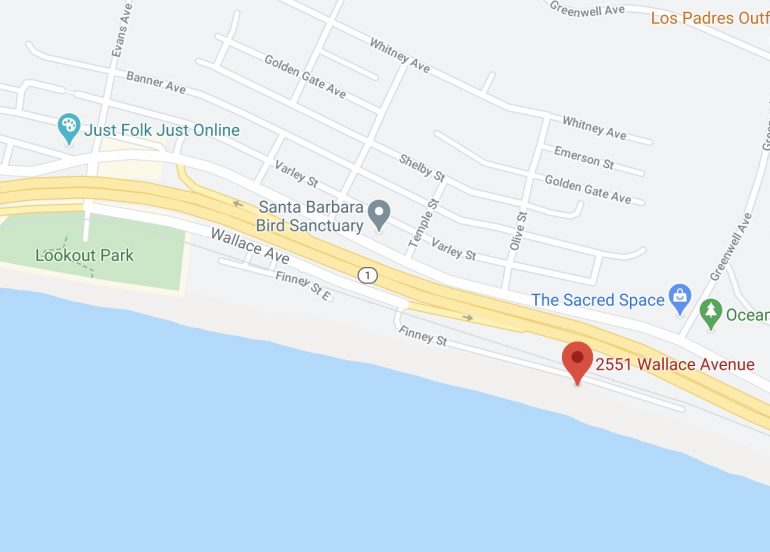 The house at 2551 Wallace Avenue—midway along Summerland Beach, on what is also known as Finney Street—is the subject of an ongoing legal battle. I pored through documents filed by owner Jeffrey O’Neil and the California Coastal Commission, and wrote up a long overview—only to discover that U.S. District Court Judge Otis D. Wright, II, in a recent ruling, had done a much more concise (and likely more reliable) job. So here is the judge’s background summary, with an occasional clarification on my part.
The house at 2551 Wallace Avenue—midway along Summerland Beach, on what is also known as Finney Street—is the subject of an ongoing legal battle. I pored through documents filed by owner Jeffrey O’Neil and the California Coastal Commission, and wrote up a long overview—only to discover that U.S. District Court Judge Otis D. Wright, II, in a recent ruling, had done a much more concise (and likely more reliable) job. So here is the judge’s background summary, with an occasional clarification on my part.
In 1996, Plaintiff O’Neil purchased the property located at 2551 Wallace Ave., Summerland, California. O’Neil files this suit against the California Coastal Commission (“CCC”), a state administrative body, and the County of Santa Barbara (“SB”) alleging their conduct denied him of all economic, beneficial, and productive use of the Subject Property without just compensation.
The CCC enforces the California Coastal Act of 1976, which requires local governments to develop a Local Coastal Program, which includes a Land Use Plan (“LUP”) and implementing ordinances. The Coastal Act requires the CCC to certify each LUP, after which the CCC delegates authority over coastal development permits to the local government.
In 1973, although other lots in the area retained their residential zoning, the Subject Property was assigned a recreation/open space land use designation (“REC”). This designation was included in SB’s LUP that the CCC subsequently certified in 1980. A REC zone limits the uses of the Subject Property to outdoor public and/or private recreational uses, such as “parks, campgrounds, recreational vehicle accommodations, and riding, hiking, biking and walking trails, golf courses, and limits structures and facilities to those ‘required to support the recreational activities.’”
In the late 1980s, O’Neil’s real estate broker informed O’Neil that SB erred in designating the Subject Property as REC. On June 20, 1988, before O’Neil purchased the Subject Property, he received a letter from Dianne Guzman, SB’s Planning Director, stating that the zoning “appears to have been inadvertently assigned.” O’Neil purchased the property in 1996, and between 1996 and 2006, O’Neil made plans to remodel the residence on the Subject Property; however, he received conflicting information from SB regarding his ability to renovate.
In April 2006, O’Neil applied to SB for a coastal development permit (“CDP”) to demolish the existing cottage and construct a new residence. In August 2006, SB denied the request because the permit needed a “Rezone of the Property [(“RZN”)] and a General Plan Amendment [(“GPA”)]” request. The letter indicated that O’Neil had failed to provide rezone applications as requested in a prior correspondence from the Planning and Development Committee. Regardless, the SB indicated rezoning would not be possible because the LUP intended for the Subject Property to be zoned REC:
On our review, the current land use designation (Recreation/Open Space), zoning (REC), and applicable Local Coastal Plan policies, such as Policy 7-9, are internally consistent with regard to this parcel. I have determined that they were clearly intended and not the result of a mapping error. Therefore, I cannot support a land use designation or zoning change for this parcel. (August 2006 Letter.)
Despite the denial, O’Neil demolished the residence to mitigate safety hazards identified in prior inspections and pursuant to the verbal approval of a representative of SB.
In 2008, O’Neil submitted applications to demolish the existing cottage, to construct a new home, and a for a variance from the parking and setback regulation. He also submitted a RZN request and a GPA request, referenced in the 2006 application. O’Neil renewed the permit applications in February of 2012. Between December 2008 and 2014, SB delayed determining O’Neil’s applications and in December 2014, O’Neil’s applications were deemed complete as a matter of law. On or about August 12, 2015, SB’s Planning and Development Commission recommended that SB’s Board of Supervisors deny the applications, but on November 3, 2015, the Board of Supervisors referred the applications back to the Planning and Development Commission with direction to draft findings to approve O’Neil’s applications. This exchange was repeated in 2018 and ultimately, on March 9, 2018, the Board of Supervisors approved the applications and rezoned the land on which the Subject Property rests for residential use.
However, on April 4, 2018, two commissioners [from the CCC] appealed SB’s approval of O’Neil’s renovation permit on the grounds that the development was inconsistent with SB’s current land use plan. On May 21, 2018, the County submitted the “project-driven” RZN and GPA amendments in support of the coastal development permit application. After a one-year extension, the CCC denied the amendments on several alleged misrepresentations of the record and determined that the land use designation was “intended as a long-term planning effort to transition the property from a residential use to a recreation/open space use.” Therefore, the RZN could not be permitted as it violated the land use designation. As the CCC denied O’Neil’s RZN and GPA General Plan Amendment request, O’Neil exhausted his local and state recourse.
Therefore, on September 6, 2019, O’Neil brought suit against SB and CCC. On October 2, 2019, O’Neil filed his [First Amended Complaint] alleging claims of (1) Uncompensated Taking per the Fifth and Fourteenth Amendments, (2) Right to Just Compensation brought under 42 U.S.C.§1983 per the Fifth Amendment, and (3) Violation of Substantive Due Process per the Fifth and Fourteenth Amendments.
A “taking” is when private property is seized, without fair compensation, by the government for public use. Judge Wright’s May 18, 2020, ruling (excerpted above) was in response to motions to dismiss brought by the California Coastal Commission and Santa Barbara County. The CCC argued that the court had no jurisdiction over the case, because the Eleventh Amendment forbids federal suits against a state by its own citizens. Judge Wright granted this with prejudice.
Santa Barbara County, meanwhile, argued that (as described in Judge Wright’s ruling) “(1) O’Neil’s first claim—takings—is not ripe because the August 2006 Letter is not a final action; (2) O’Neil’s second claim—right to just compensation—is barred by a two-year statute of limitations; and (3) also as to his second claim, O’Neil fails to allege that the August 2006 Letter caused any deprivation of use of his property.” The court denied the county’s motion in entirety, allowing the lawsuit to proceed.
The county subsequently filed a motion to reconsider the decision, which Judge Wright denied on August 12. Now, barring another motion to block the lawsuit, the court presumably will set a trial date. In the meantime, you can see why O’Neil might not be in any hurry to make the house less of an eyesore.
UPDATE 7/21/2021: Jeff O’Neil and Santa Barbara County appear to have reached a settlement in regard to the house O’Neil wanted to build on an oceanfront Summerland bluff. (Short version: even though a house already existed there, the county rezoned the property from residential to recreational, which blocked him from legally moving forward.) I assume the settlement is financial, and not that the county caved on allowing a new house.
Previous Burning Questions:
••• Is there a story behind Lucky Penny’s bell?
••• Why is there wood on some power lines?
••• What are these black beetles that are everywhere this spring?
••• Can you explain how sundowner winds work?
••• Why is there a pressure cooker attached to this utility pole?
••• What’s this concrete ramp thing on East Beach?
••• Why does “USA” get written on the street?
••• What are those poles in the ocean near the Ritz-Carlton Bacara?
••• Are people really allowed to set fires in the middle of Montecito?
••• What’s the story with the half-finished lot next to the Montecito Country Mart?
••• Is the bridge over San Ysidro Creek ever going to get repaired?
················
Sign up for the Siteline email newsletter and you’ll never miss a post.


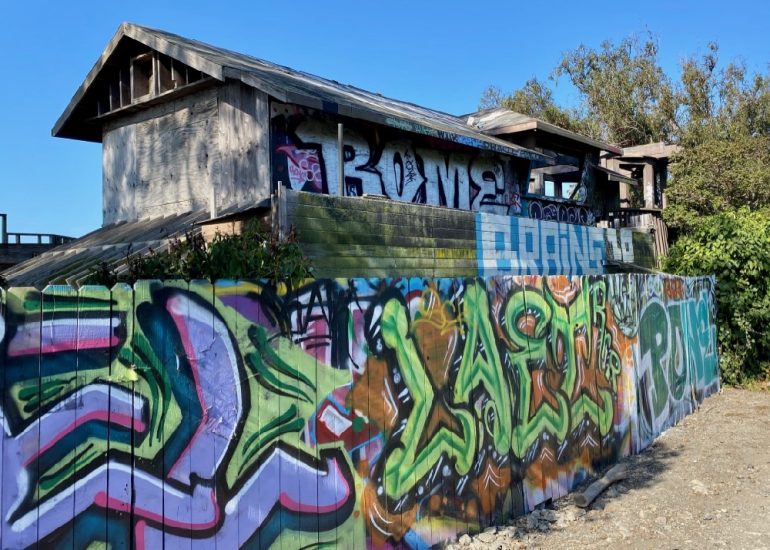
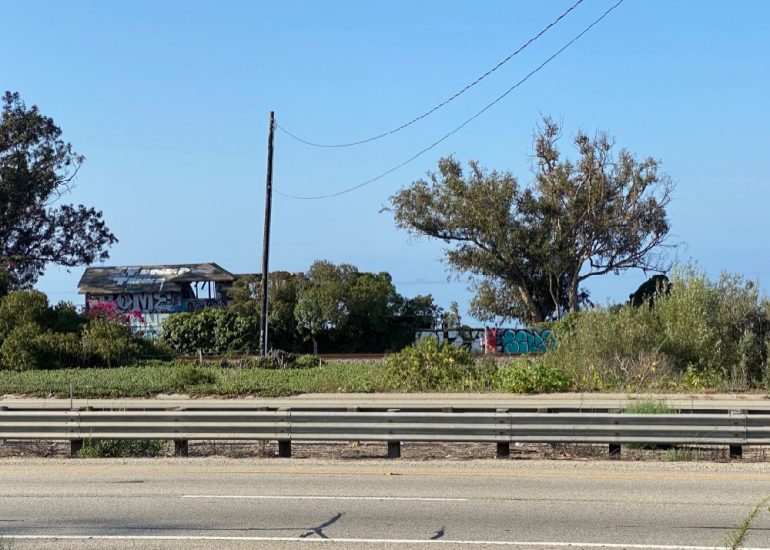
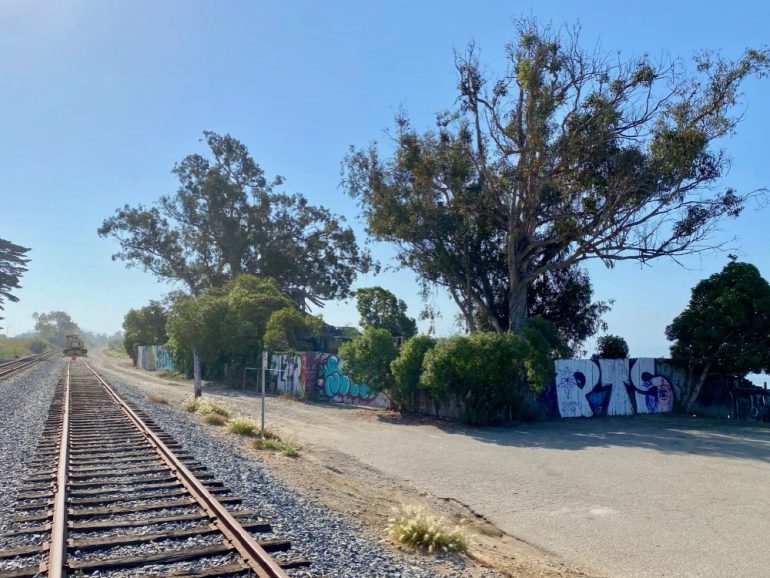
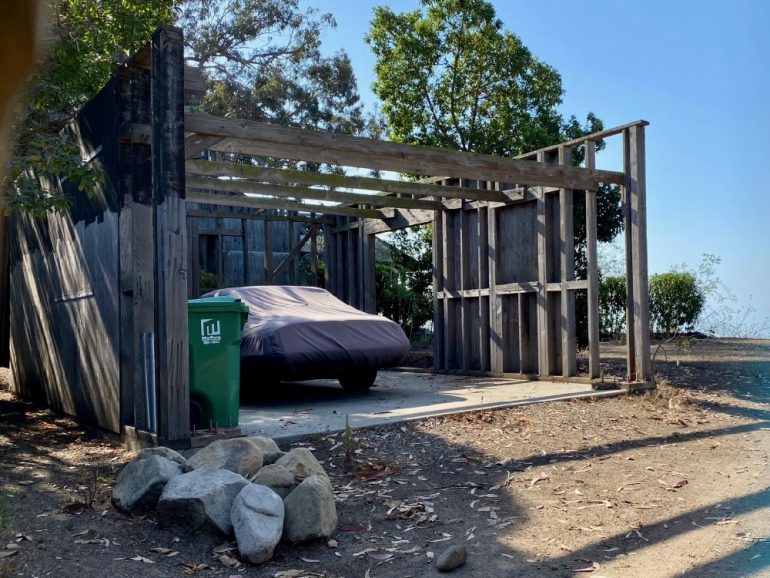
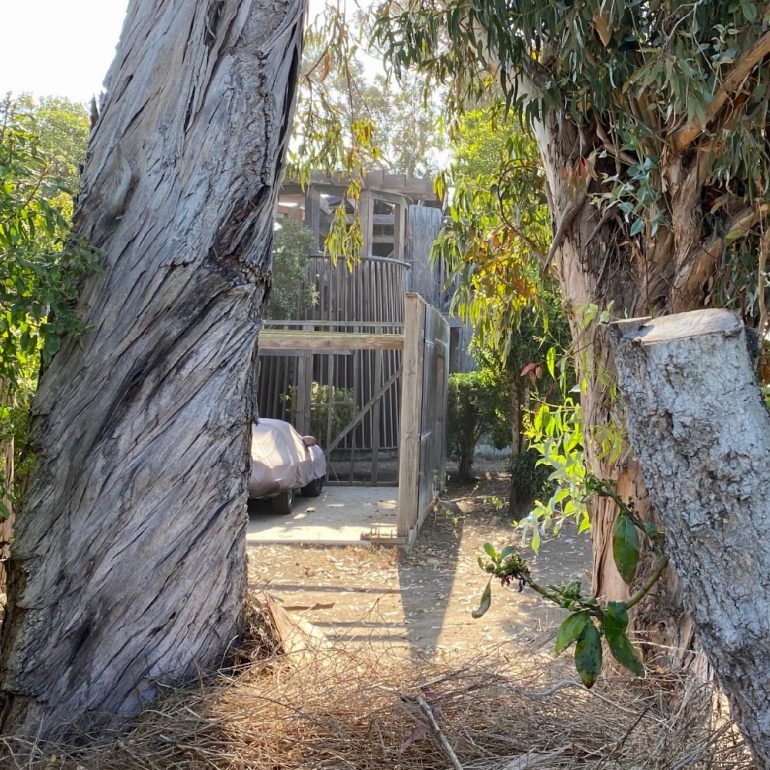













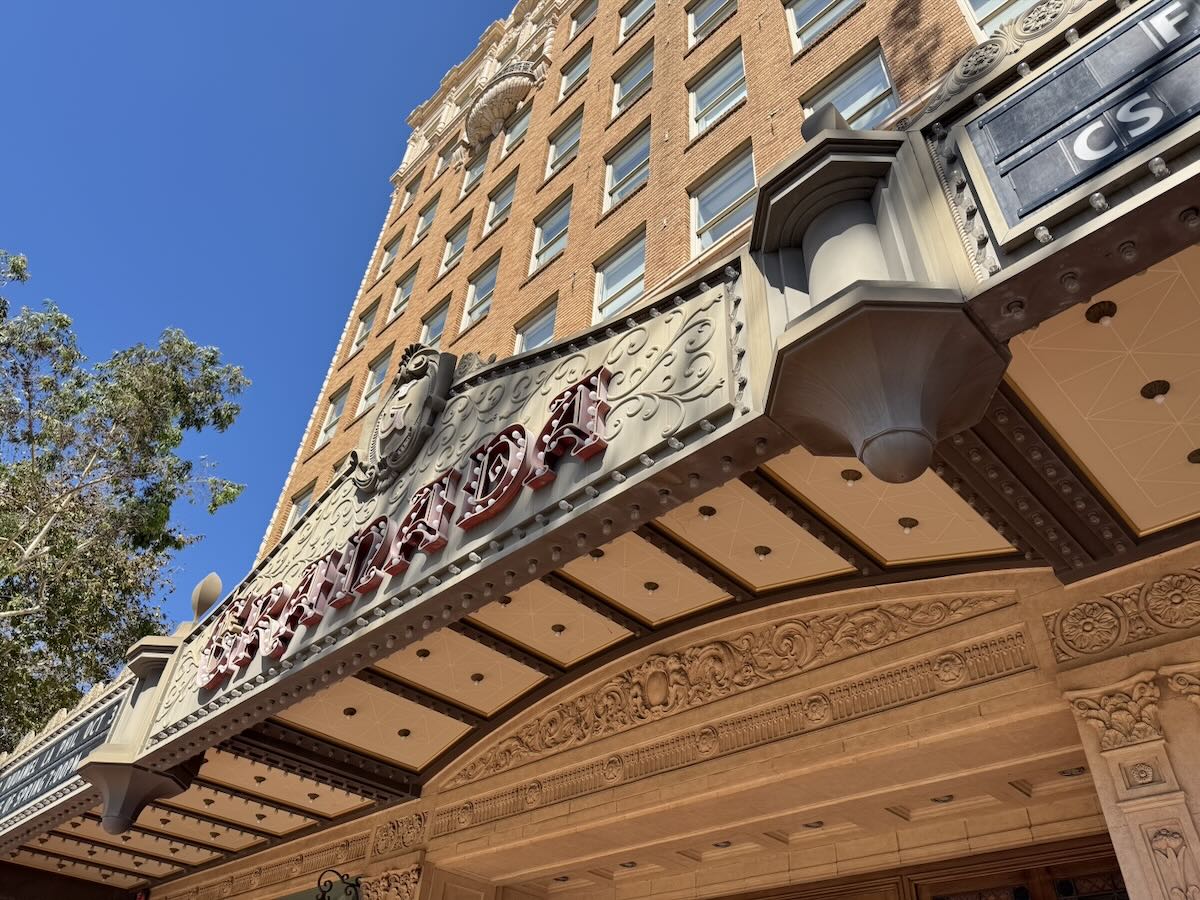

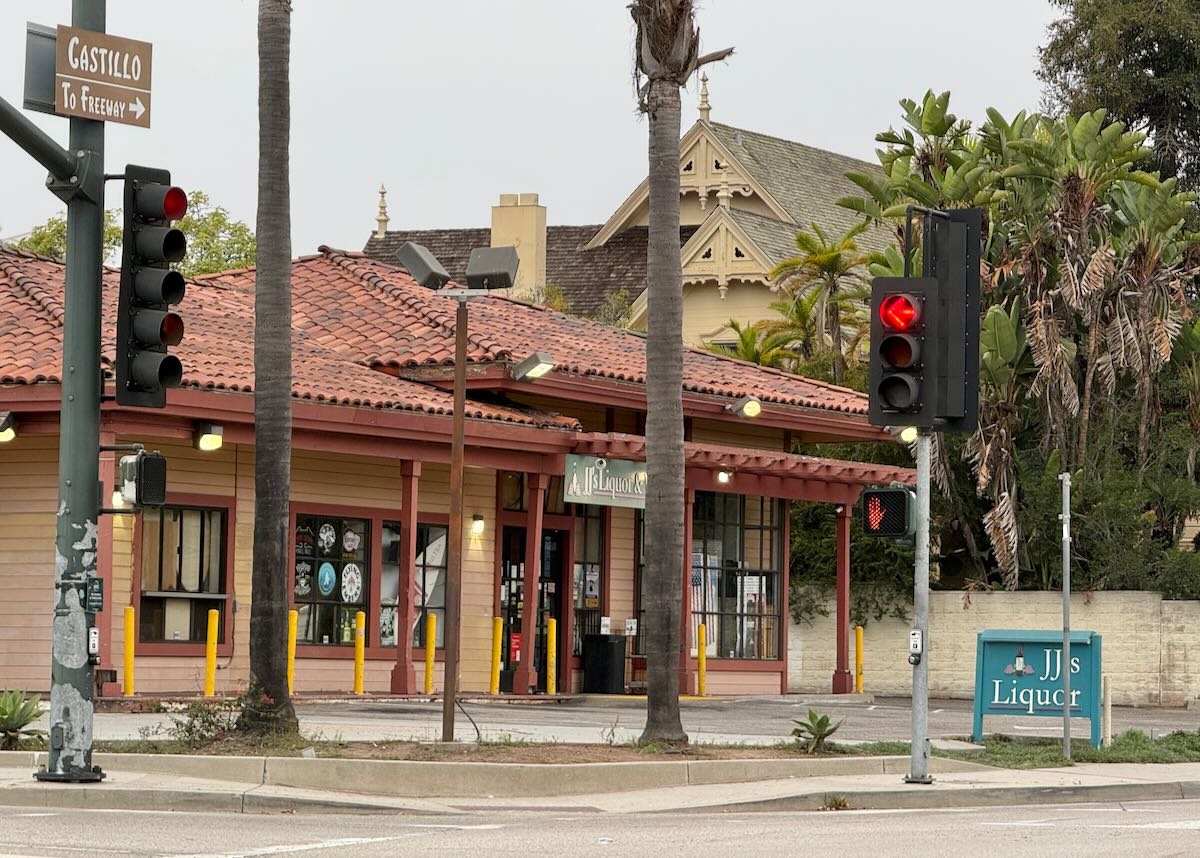
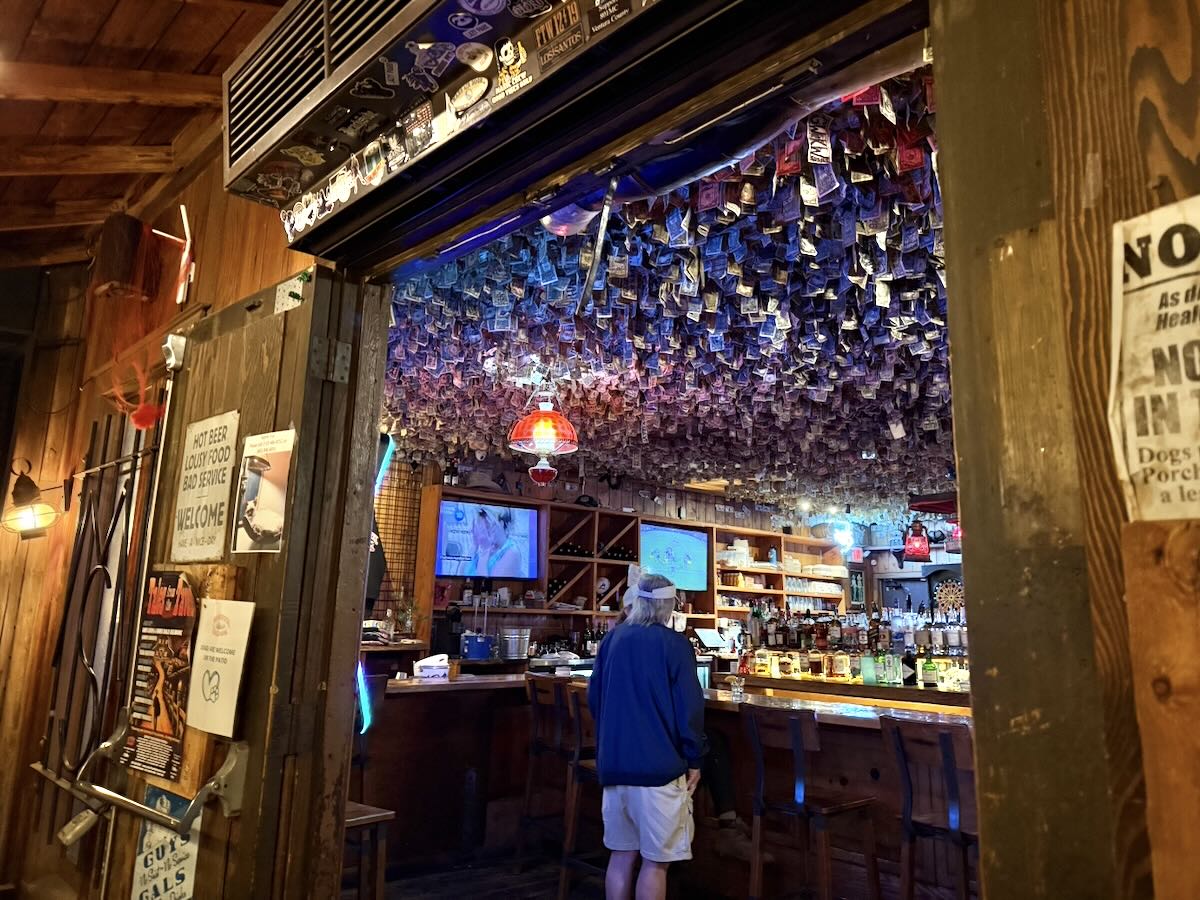
This house is not an abandoned property!
People live in the studio apartment which is on the property. Please don’t trespass. These folks enjoy their privacy like anyone else. You will notice there is always a car in the uncovered garage. Please respect Mr O’Neil and his place while he is in litigation seeking due process.
Sincerely
Alison McDermit Sr